Restoring the Urban Dream
Affordable Housing in New York
Text: Shane, David Grahame, New York
-
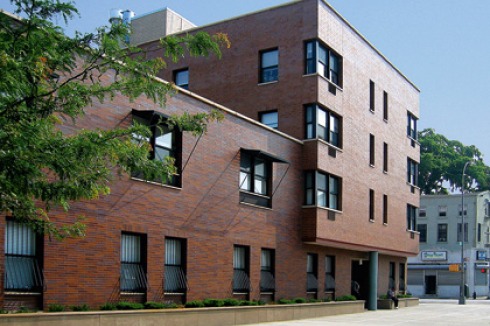
614 Marcy Avenue, Brooklyn
Photo: Paul Warchol
614 Marcy Avenue, Brooklyn
Photo: Paul Warchol
-
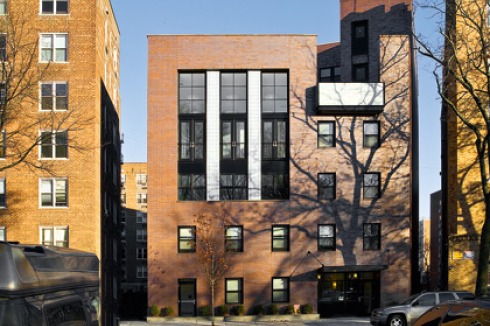
2330 Bronx Park, Bronx
Photo: Rodrigo Pereda
2330 Bronx Park, Bronx
Photo: Rodrigo Pereda
-
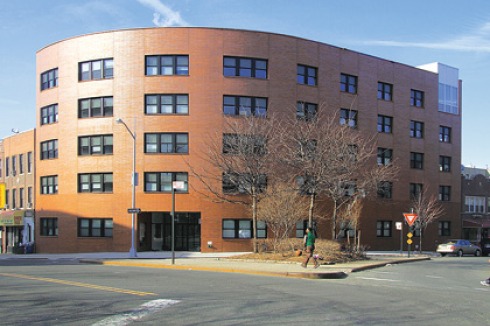
1401 Teller Avenue, Bronx
Photo: Pedro Pulido
1401 Teller Avenue, Bronx
Photo: Pedro Pulido
-
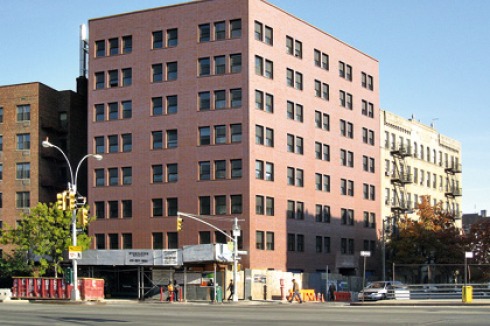
2950 Grand Concourse, Bronx
Photo: Pedro Pulido
2950 Grand Concourse, Bronx
Photo: Pedro Pulido
-
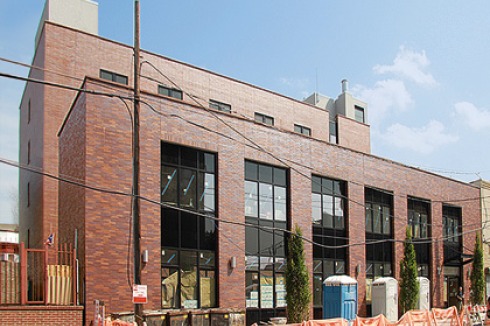
1974 Hughes Avenue, Bronx
Photo: Jason Gibbs
1974 Hughes Avenue, Bronx
Photo: Jason Gibbs
-
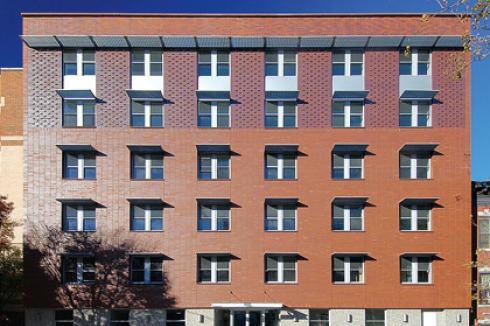
1501 St. Marks Avenue, Brooklyn
Photo: Philippe Baumann
1501 St. Marks Avenue, Brooklyn
Photo: Philippe Baumann
Through precise and formally strict interventions, Jonathan Kirschenfeld Architects create dignified housing for the underserved. What are the larger implications for the revival of urban space?
Aldo Rossi in the Architecture of the City (1966 Italian, 1984 English) made a distinction between the great collective monuments of the community and the everyday living spaces of the citizenry, the urban fabric. Both urban systems represented a collective memory but at different scales. Both systems in Rossi’s view were shared morphological codes that gave the city its character. With industrialization and scientific knowl-edge many of the earlier craft traditions were lost, but the traditional forms became collective archetypes, memories symbolic of place and culture. In the recent work of Jonathan Kirschenfeld Architects these archetypes reappear as inspirations for a surreal and courageous recreation of a lost urbanity exploiting to the maximum the local codes and conditions.
Kirschenfeld’s designs play on a deep knowledge of the housing typologies of New York and the codes that created these archetypes. Kirschenfeld skips the evolution of the tenement blocks and prefers the courtyard, u-shaped and other perimeter block typologies that flowered in the 1920’s and 1930’s, often with moderne or art deco styling in the lower cost outer boroughs like Brooklyn and the Bronx. The office builds on unusual, irregular, residual infill sites selected for his clients, their difficult geometries having rendered them difficult to market or build on. His clients are non-profit organizations dedicated to providing services and permanent housing to special-needs populations such as the mentally ill, formerly homeless, or people living with HIV. The construction of this so-called supportive housing is largely funded by federal, state, and municipal agencies. New York City zoning code regulates this housing not as Use Group R2 / Residential, applied to most forms of housing, but as Use Group R3 / Community Facilities, which includes not only supportive housing but other forms of housing managed by non-profit or governmental organizations such as student dormitories, housing for the elderly, or hospital staff accomodations.
Requirements of Use Group R3 and Use Group R2 differ significantly. First, for Use Group R3 there is no minimum dwelling unit size (even if in practice minimum room dimensions result from the application of accessibility requirements and other guidelines). Second, there is no parking requirement. Third, there are no density rules limiting the number of units per building. Finally, the minimum courtyard dimension is only 20 feet (6.60 m) as opposed to the 30 feet (9.10 m) required in residential construction. It is only due to the fact that supportive housing is governed by these more liberal codes that Kirschenfeld is able to revisit archetypes and realize buildings on sites deemed undevelopable by builders of multi-family housing.
The House is a City
Kirschenfeld provides a remarkably civilized public realm inside the building, replicating his vision of the city in decept-ively simple plans, generating complex sections and massing. At the city gate a doorman-concierge station at the entrance is standard to ensure security, and a waiting area behind gen-erally gives onto the bank of elevators and stairs leading up-stairs. Mailboxes, laundry rooms, and recycling rooms cluster around the elevator cores. Common rooms – little town squares for meetings or dining – are typically located on the ground level, opening up to a courtyard garden, as at Marcy Avenue or Hughes Avenue. In some schemes support services occupy the second floor, or the sequence of public rooms continues up to the top floor, culminating in a double height common room and a roof terrace, as at Bronx Park East (marked by a magnificent Loosian window facing the park). Attention is given to detail: Floor tiling and ceiling coves articulate the entry sequence in the front halls with small bench alcoves by the el-evator entrances. Along the upper corridors, ceiling coves and floor patterns mark the entrance to each apartment.
Kirschenfeld’s strict, urban, organizational hierarchy, from public to semi-public to private, proves extremely flexible in these infill micro-sites. Kirschenfeld employs both single- and double-loaded corridors on the residential floors, which are generally composed of studios, each with a full kitchen and a full bathroom. Double-loaded corridors have windows at both ends where possible, and their midpoint is marked by a resident lounge, another mini urban marker. Single-loaded corridors, as at Teller Avenue and at St. Marks, are daylit by, in the first case, Kalwall-insulated fiberglass panels and, in the second case, by fixed lot-line windows with sprinkler heads directly above, the only way to place openings on the property boundary. Even within each unit, Kirschenfeld manages to center a room with ceiling coves, giving each space a quiet dignity, while making clever plan moves to secure excellent corner rooms with windows in two directions if the site permits.
The work of Kirschenfeld’s office demonstrates the ancient Alberti dictum that a house is a small city and the city a big house. In this case the house is elegantly and economically embedded deep with the protective matrix of codes and regulations, reflecting the best in the city’s urban morphology, placed at the disposal of those most fragile and at risk in the city. This is a great achievement, creating a network of small, wonderful monuments to a hidden safety net, almost invisible and hardly known, but gifts that enrich the life of the great city (as recently noted by the New York Times). The Times placed Kirschenfeld’s work in the context of the “Making Room” initiative, a larger effort to revise New York City’s building codes to allow for housing that responds to current needs. There, Kirschenfeld, working as “Team R8,” made the case for extending the logic (and the existent R3 code) underlying his housing to apply to the needs of the general public, proposing four new buildings with mixed-income populations on the Grand Concourse in the Bronx. Team R8 converted the boulevard into a tree-lined public space like Barcelona’s Ramblas.
Subsistence Dwellings for the ‘Creative Class’
In this Rossian urban fantasy of bottom-up infill building, the new, local netizens return from the cold to reclaim the sidewalks and center lanes from cars, creating a new, courageous, and more flexible future urbanism. In a surreal twist the infill housing of the underprivileged suddenly takes center stage on the Grand Concourse to serve a new, upwardly mobile bourgeoisie, a fluid networked generation left out of New York City’s current housing equation. These micro moves would invigorate the city and Grand Concourse from within and from the bottom-up, offering a new, wired, hyper-flexible Existenzminimum dwelling type to the currently endangered ‘creative class’ whose participation is crucial for the city’s future. Out of New York’s collective morphological unconscious, Kirschenfeld and Team R8, like a magician, draw a sketch of a new emergent urbanism beyond Rossi’s wildest dreams.
x
Bauwelt Newsletter
Immer freitags erscheint der Bauwelt-Newsletter mit dem Wichtigsten der Woche: Lesen Sie, worum es in der neuen Ausgabe geht. Außerdem:
- » aktuelle Stellenangebote
- » exklusive Online-Beiträge, Interviews und Bildstrecken
- » Wettbewerbsauslobungen
- » Termine
- » Der Newsletter ist selbstverständlich kostenlos und jederzeit wieder kündbar.
Beispiele, Hinweise: Datenschutz, Analyse, Widerruf
0 Kommentare